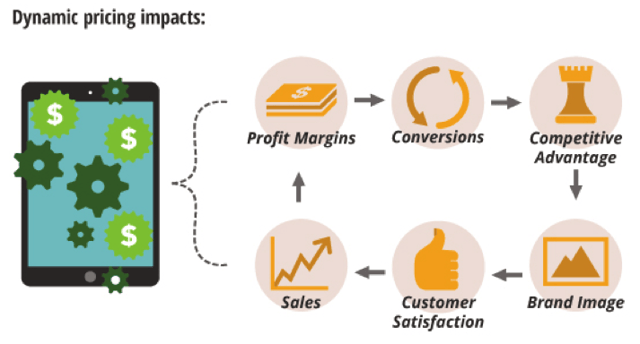As we launch into the holiday season, publications - Forbes, Business Insider, The Washington Post, just to name a few- are rife with claims that Black Friday is dead. While this claim is exaggerated (more on this below), it is true that the retail deal game and holiday-season strategies are changing. And that’s largely thanks to dynamic price optimization.
Calm Down, Everyone: Black Friday (and Cyber Monday) Are Not Dead
While the specific days themselves have certainly lost much of their significance with deals often extending into the periods well before and after these days, let’s not get ahead of ourselves - actual Black Friday and Cyber Monday (as in, November 24 and 27th, 2017, respectively) still represent a very important portion of retailers’ sales for the entire year.
According to PwC, in 2016, Cyber Monday set a new record of $3.45 billion in online sales, a staggering 12 percent increase over 2015. Shoppers spent $3.3 billion on Black Friday and another $1.9 billion on Thanksgiving Day itself in 2016. Even if there’s an uncharacteristically large decrease in Black Friday spending this year, that’s still a huge amount of spending. Black Friday, dead? We don’t think so.
Cyber Monday and deals throughout the season have somewhat quelled the mad dash and madness that used to be Black Friday, but don’t worry - it’s still very much a thing.
Holiday Blues
It’s hard to imagine retailers complaining about holiday shopping - after all, the National Retail Federation reports that 2016 holiday sales represented nearly 20 percent of total retail industry sales overall.
That being said, pricing something incorrectly, choosing the wrong items to go on sale - this can be completely devastating for retailers and, seeing as it’s already December, it often cannot be made up for before the close of the year. Additionally, there’s a lot of pressure on supply and stocking exactly right (not too much, not too little) not to mention staffing for physical stores and ensuring websites don’t buckle under high traffic (even Macy’s fell victim in 2016).
Holiday shopping influx is still very much a challenge for retailers.
On top, or maybe in spite of, overcoming these challenges, analysis from PwC also shows that the pressure to offer better and better deals has continually driven retailers’ gross margins for Q4 down.
What’s Changing
Of course, the holidays will always be a busy shopping season. There doesn’t seem to be an end in sight to the tradition of giving presents, and unless you’re like my mother who buys holiday gifts in September, most of us just can’t plan ahead like that. So inevitably, year in and year out, there will be a lot of people who want to buy a lot of things all at one time, and this will always present challenges for retailers.
But what is changing is the idea that Black Friday is the only time you can get a deal. We know that some large percentage of people (estimates range from 30-60 percent) shopping the holiday deals aren’t buying gifts at all - they’re buying things for themselves.
While the PR associated with holiday deals certainly is a nice benefit, retailers should use all the data at their disposal to weigh the costs of whether packing all of the deals into one time of the year is really worth it, all things considered (we suspect that for most, it’s not). And if not, they need to find a way to optimize sales all year round.
Enter Data Science and Machine Learning
Luckily for retailers, there are proven strategies today that can actually automatically optimize sales and deals all year round. Dynamic pricing allows retailers to shift from strategies where they determine prices with macro-level predictions (that is, based on averages of large swaths of customers) to taking into account subtle nuances in different geographies, specific stores, and even with specific shoppers.
To Automated Dynamic Pricing Optimization and Beyond!
Data science and machine learning can help not just with optimizing price but with determining which items should be offered as a deal so as to optimize sales of other (full price) items. The National Retail Federation reports that only 30 percent of shoppers purchase only on-sale items, so optimizing for the higher-margin, non-sale items is critical.
A machine learning model can easily combine data from many sources (like web browsing history as well as actual purchase history whether it was in store or online, for example) to recommend full-price companion items that a customer is actually very likely to buy. You can read more about building an effective recommendation engine, as well as the different types of recommendation engines.

And the gains from data science, machine learning, and predictive analytics using up-to-the-minute data (as opposed to stale data from a previous season) don’t stop there. Retailers can further optimize sales through gains in optimizing their supply chain. Predicting what items will sell when and then subsequently having orders automatically placed for restocking those bound to disappear ensures that physical (or virtual) shelves stay optimally stocked.
Again, these are techniques that can be leveraged all year round, though certainly at the holidays as well. With gains everywhere using data science and machine learning, from supply chain to pricing and even customer interaction, the future looks bright for retail. Even if, eventually, someday, somehow Black Friday dies.




